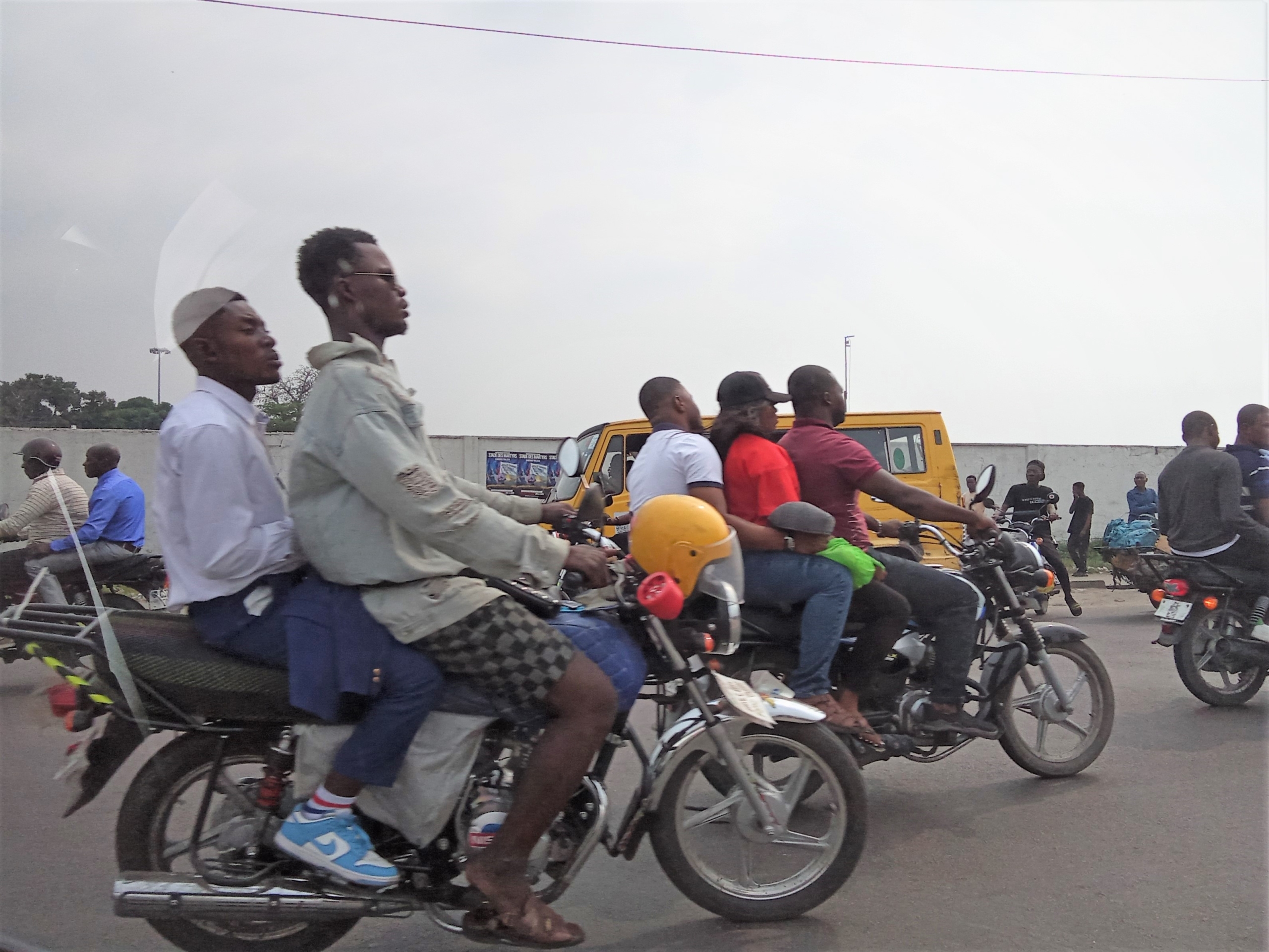
Uudised
Uncovering the digital transformation of Kinshasa: Impact of phones on daily mobility
Published on 15.09.2023
Written by Pauline Baudens, Early-Stage Researcher, FinEst Centre for Smart Cities / TalTech
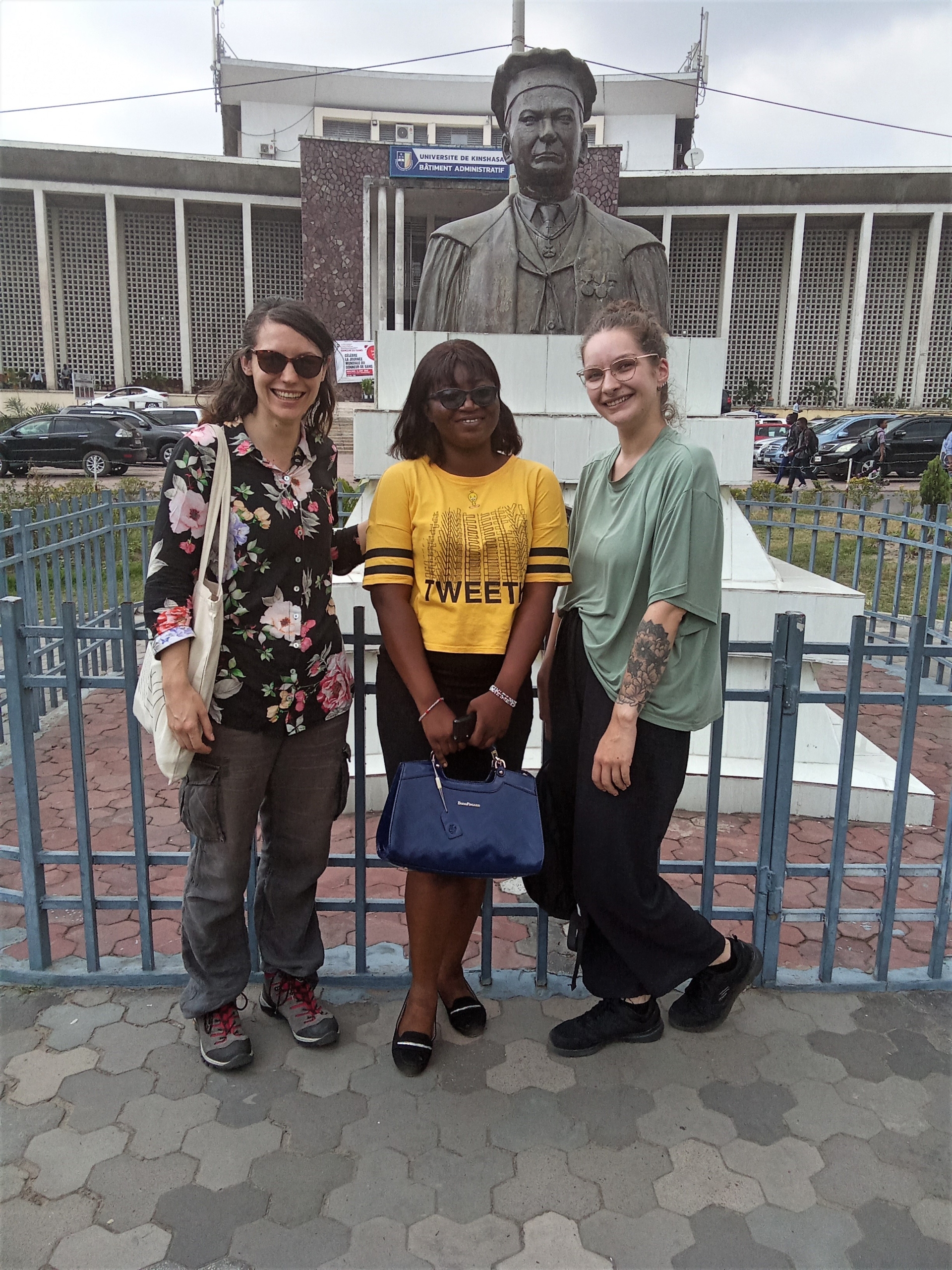 Pauline in Kinshasa, research on daily mobility practices
Pauline in Kinshasa, research on daily mobility practicesKinshasa captures our attention as the capital of a key-player country in the global phenomenon of digitalisation. Interestingly, the Democratic Republic of Kongo (DRC) stands as a major producer of coltan and cobalt, essential components for batteries, smartphones, etc.
Despite this, the nation remains marginalised due to slow digital adoption and suffers from endless conflict in the extraction regions. In fact, DRC ranks among the planet’s poorest countries, securing a position of 179 out of 191 in the HDI classification (UNDP 2021).
Experiencing exponential growth, Kinshasa is Africa’s second-largest city and ranks thirteenth worldwide with more than sixteen million inhabitants (Source: World Population Review, 2023). The city’s population is predominantly youthful, with approximately 56,3 % of the Congolese population being under twenty years old (Source: United Nations, 2020).
Despite Kinshasa’s substantial size, its scientific literature remains insufficiently explored. This project aims to contribute to the understanding of Kinshasa’s digital transformation.
Understanding mobile phone use among students
We formed a team of five researchers engaged in this project. However, it was only Marie Hassen, an engineering researcher at LVMT, and me who embarked on a three-week exploration of Kinshasa in June 2023.
During this fieldwork, we collaboratively navigated the complexities of this megalopolis, new territory for both of us, and strategically designed our investigative approach to make the most of our limited time.
Across these intensive three weeks, we successfully interviewed a total of 52 students from diverse faculties at University of Kinshasa (UNIKIN), facilitated by the administration’s support. Conducting these interviews in French, our mother tongue, greatly facilitated information collection.
We thought it essential to engage both male and female students to compare their mobility patterns and perceptions of safety in Kinshasa’s relatively insecure urban environment.
Our decision to focus exclusively on UNIKIN was driven by its rich student diversity due to the high number of faculties (13 in total), that attract students from a wide socio-economic spectrum. Overall, it was important to interview a large diversity of students.
Given the time constraints of our fieldwork, students were a readily accessible interview population. Their youthful age also made them likely candidates as they were highly susceptible to using daily mobile phones and more generally digital tools.
Within the provided spaces by each faculty’s administration, we conducted interviews, digging into topics such as mobility practices, mobile phones use in relation to mobility, and feeling of safety in Kinshasa.
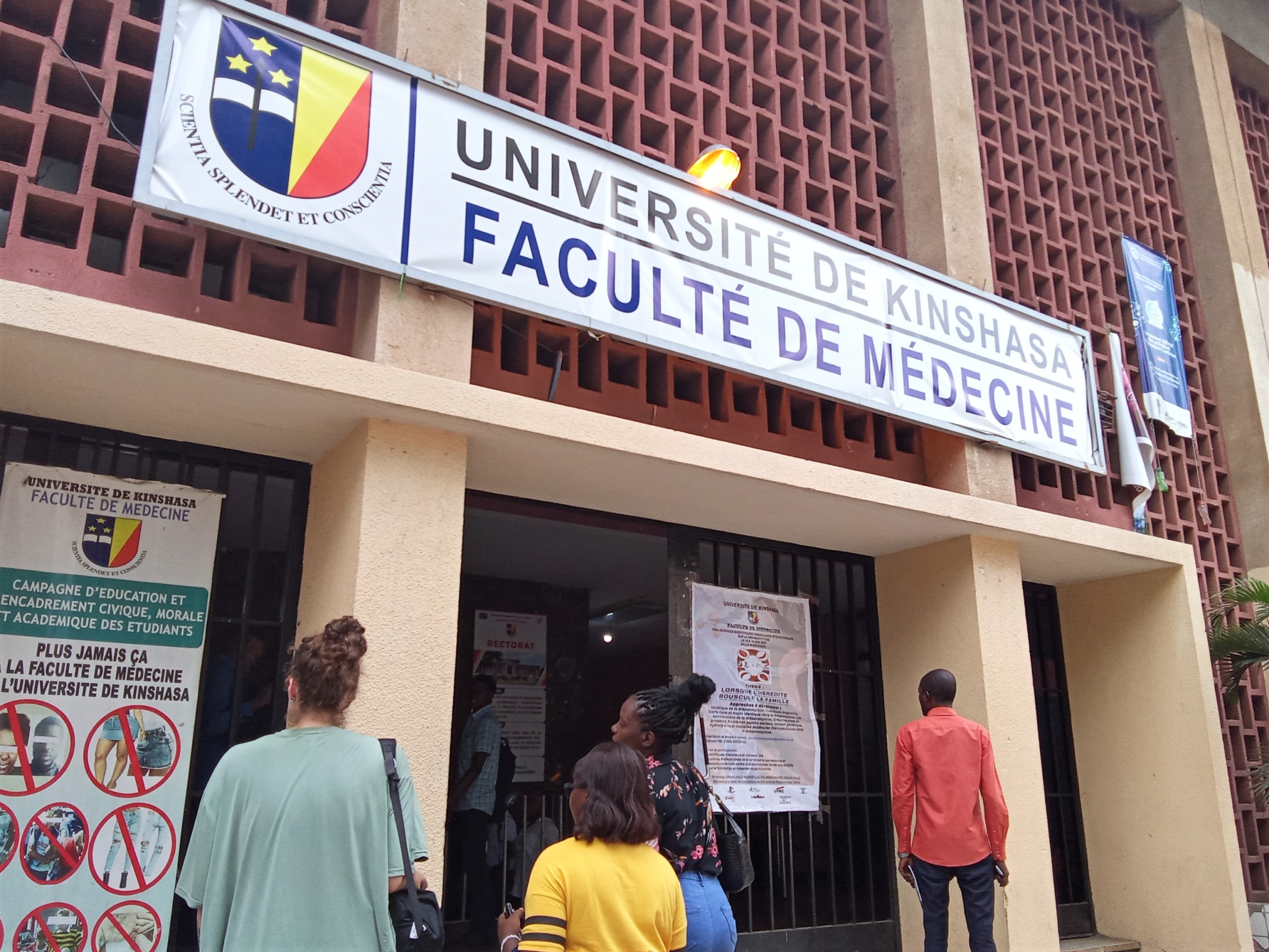 University of Kinshasa, Congo. 52 students were interviewed about their mobility practices
University of Kinshasa, Congo. 52 students were interviewed about their mobility practicesDuring each interview, we asked around 30 questions. Below are a few examples of the addressed questions:
- Can you explain what are the main challenges you encounter regarding mobility?
- Can you explain what has changed in your travel habits since you started using your phone?
- Do you use your phone to ensure your safety? If so, how?
- How does security/insecurity impact your mobility?
In addition to student interviews, we engaged with several experts including professors, operators, and associations, to gain a comprehensive understanding of the contextual landscape of Kinshasa.
Kinshasa, a beautiful lesson in resilience and optimism
The fieldwork experience was incredibly enriching. We were met with warm welcomes and generous support from the local community. Particularly at UNIKIN where we had the pleasure of interacting with researchers who were not only engaging but also captivating in their insights.
Initially, two students helped us find our way, but soon enough, we were confidently exploring the city during the day on our own, travelling with the minibuses without any hassle whatsoever. We saw vibrant and animated streets, accompanied by played music.
People looked at us with a lot of curiosity while we were attempting to travel using public transport. Kinshasa has taught us a beautiful lesson in resilience and optimism.
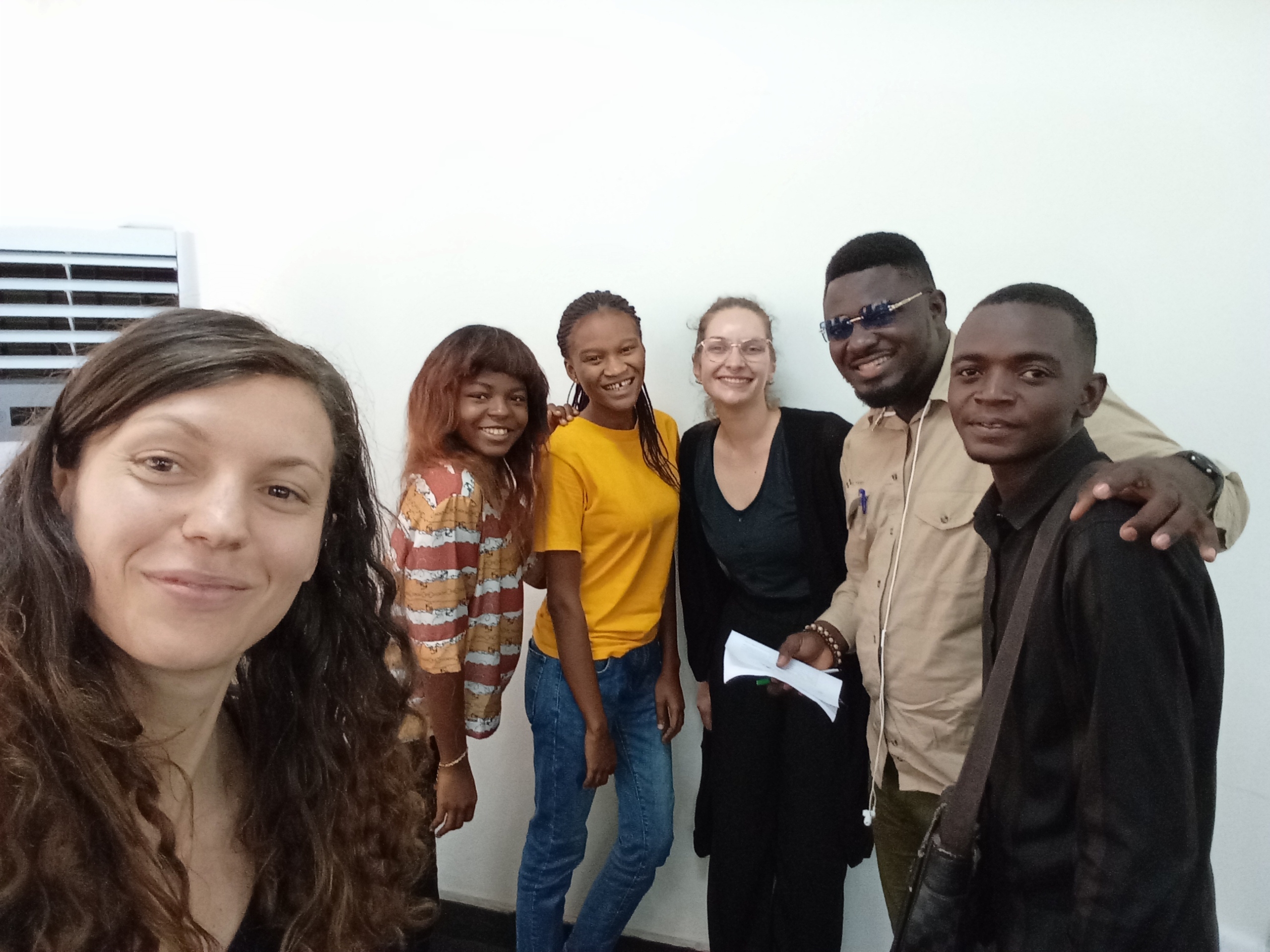 Female and male students were interviewed to understand better their daily mobility practices
Female and male students were interviewed to understand better their daily mobility practicesAs our preliminary findings reveal, students had limited digital engagement in their daily mobility. Despite the proliferation of mobile applications designed for navigation and transportation, such as student buses and taxi services, there was limited acceptance among students. Many perceived them as either inaccessible or lacking purpose.
In contrast, social media through communication played a more indirect yet influential role in shaping mobility and impacted their sense of safety.
Overall, the environment of insecurity and the challenges of travel-induced paradoxical behaviours among students. These conditions simultaneously constrained their movements while stimulating resourcefulness and adaptability, without always involving digital practices.
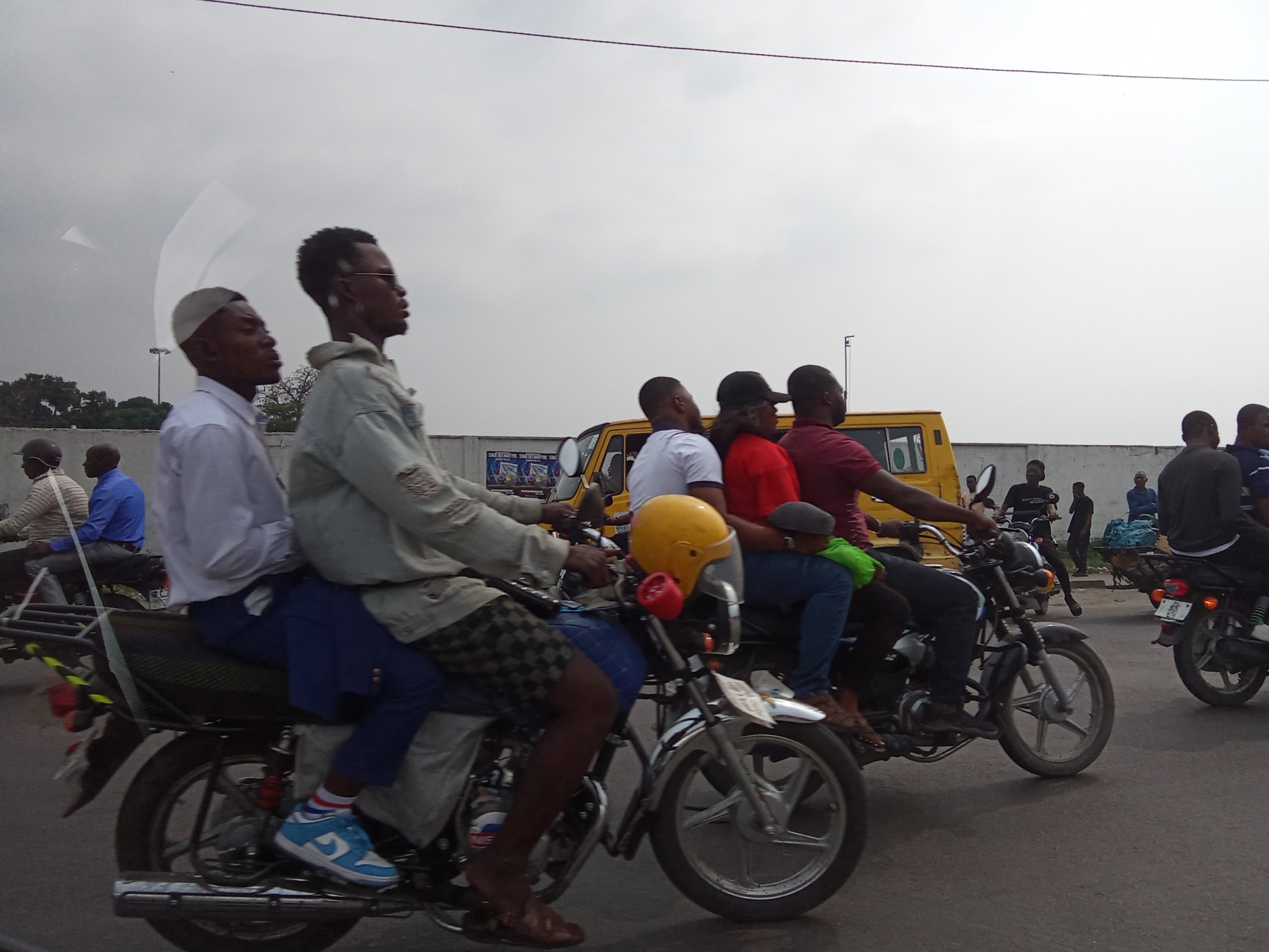 Various mobility options are offered, but not always available for students for various reasons
Various mobility options are offered, but not always available for students for various reasonsThe project, titled “The Mobile Phone’s Role and Strategic Mobility Practices of Students at the University of Kinshasa (UNIKIN)”, is part of a research initiative supported by the World Bank and the CERViDA-DOUNEDON, and led by the “Laboratoire Ville Mobilité Transport” (LVMT) at École Nationale des Ponts et Chaussées in Paris. Its objective is to publish at least one paper examining the effects of mobile phones on the daily mobility practices of students in Kinshasa, Democratic Republic of the Congo (DRC).
Earlier this year, Pauline spent time on a fieldwork in Pune, India, to get a deeper understanding how women are included in the digital revolution of smart cities and how they utilize mobility apps to navigate their daily lives. Read more about it here.


